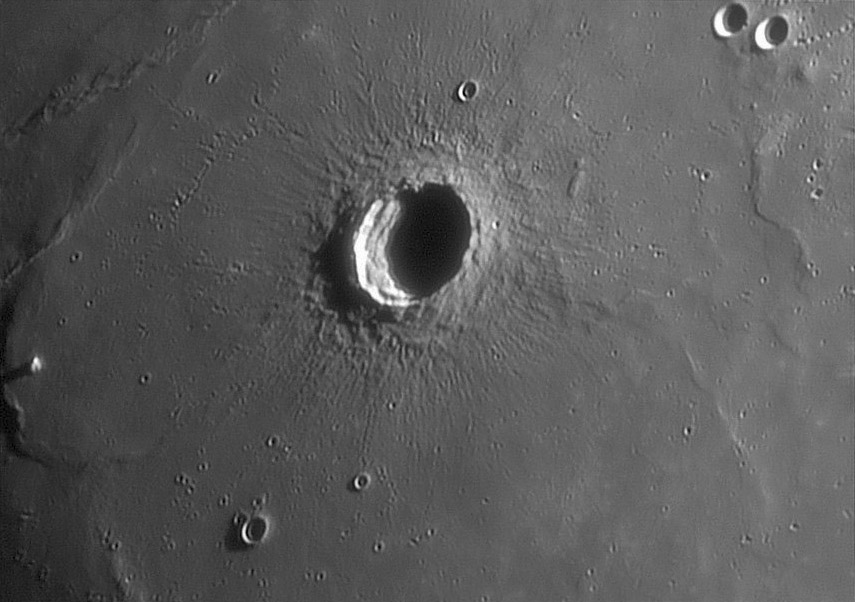
image by Bruno Daversin, France
Timocharis formed on top of Mare Imbrium lavas - you can tell by the radial lines of ejecta and more distant secondary craters that are superposed on the mare suface. Despite this newness there are no certain rays associated with Timocharis, although the exterior of the rim is bright, as is an area immediately to the east of the crater. The lacks of rays classifies Timocharis as being of Eratosthenian age, probably older than 1 billion years. Timocharis has recently been discovered to have a relatively strong thorium anomaly, based on reanalysed data from Lunar Prospector. High thorium values also exist at the Apennine Bench area about 100 km to the east. This suggests that Timocharis punched throught relatively thin layers of Imbrium lavas and excavated into a buried continuation of the Apennine Bench or a similar thorium-rich unit. Timocharis has another characteristic we can’t see. It is a radar dark halo crater. That means that it is not surrounded by blocks and boulders, but by material that only weakly reflects radar waves.
Technical Details:
27 January, 2007. 305 mm Schmidt-Cassegrain & DMK camera. Bruno is using his own personnal new cassegrain telescope, while the Ludiver 600 mm mirror is being aluminized.
He writes: It is a new one for me, but this instrument is very famous in France. It belonged to Christian Arsidi, a very close friend of mine, who sent it to me recently. Christian took the best lunar pictures in the eighties (TP 2415 film) and you can find his images in Jean Dragesco’s “high resolution astrophotography” book.
Related Links:
Rükl chart 21
Yesterday's LPOD: A Horrible Map
Tomorrow's LPOD: Like Getting New Glasses
COMMENTS?
Register, Log in, and join in the comments.



